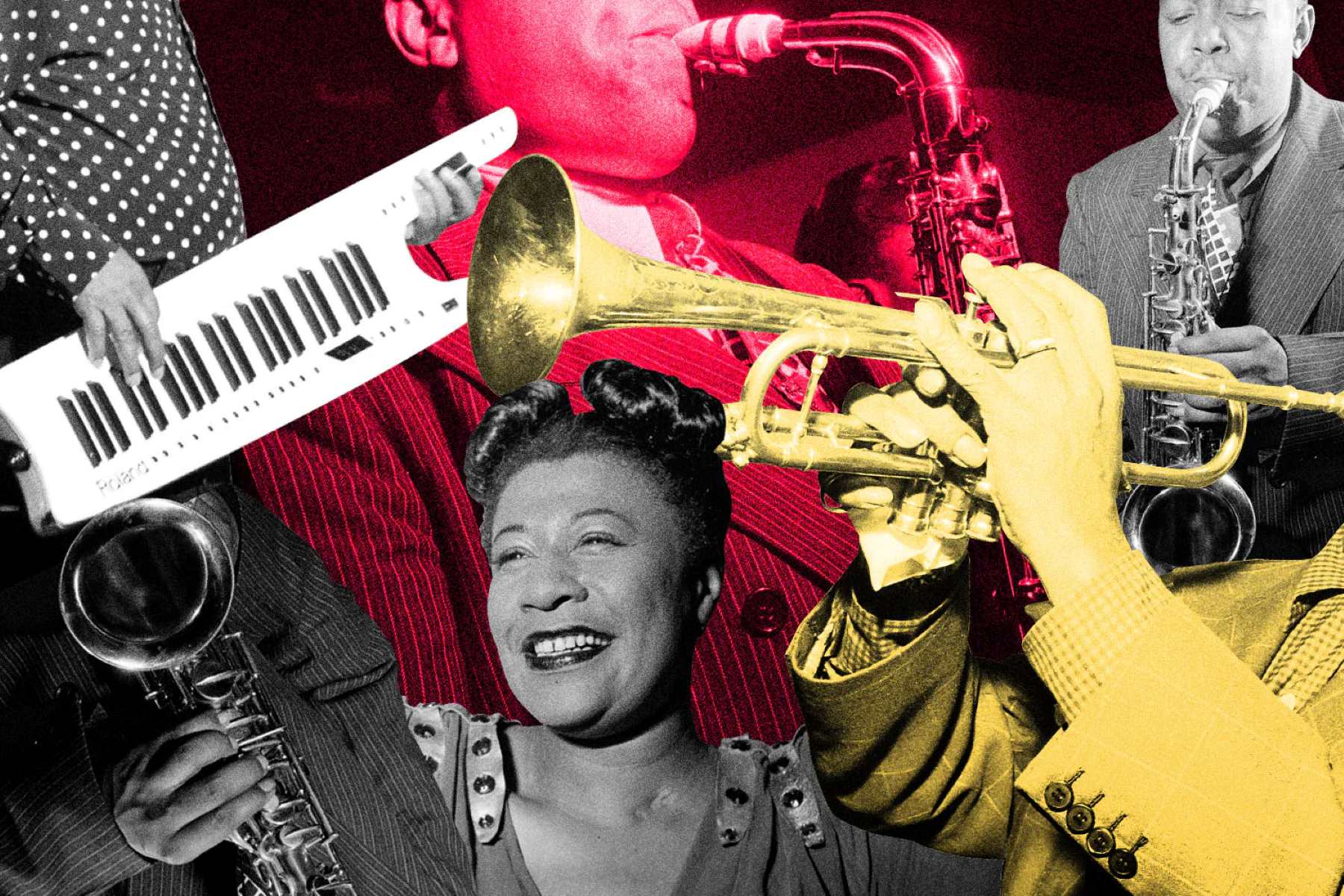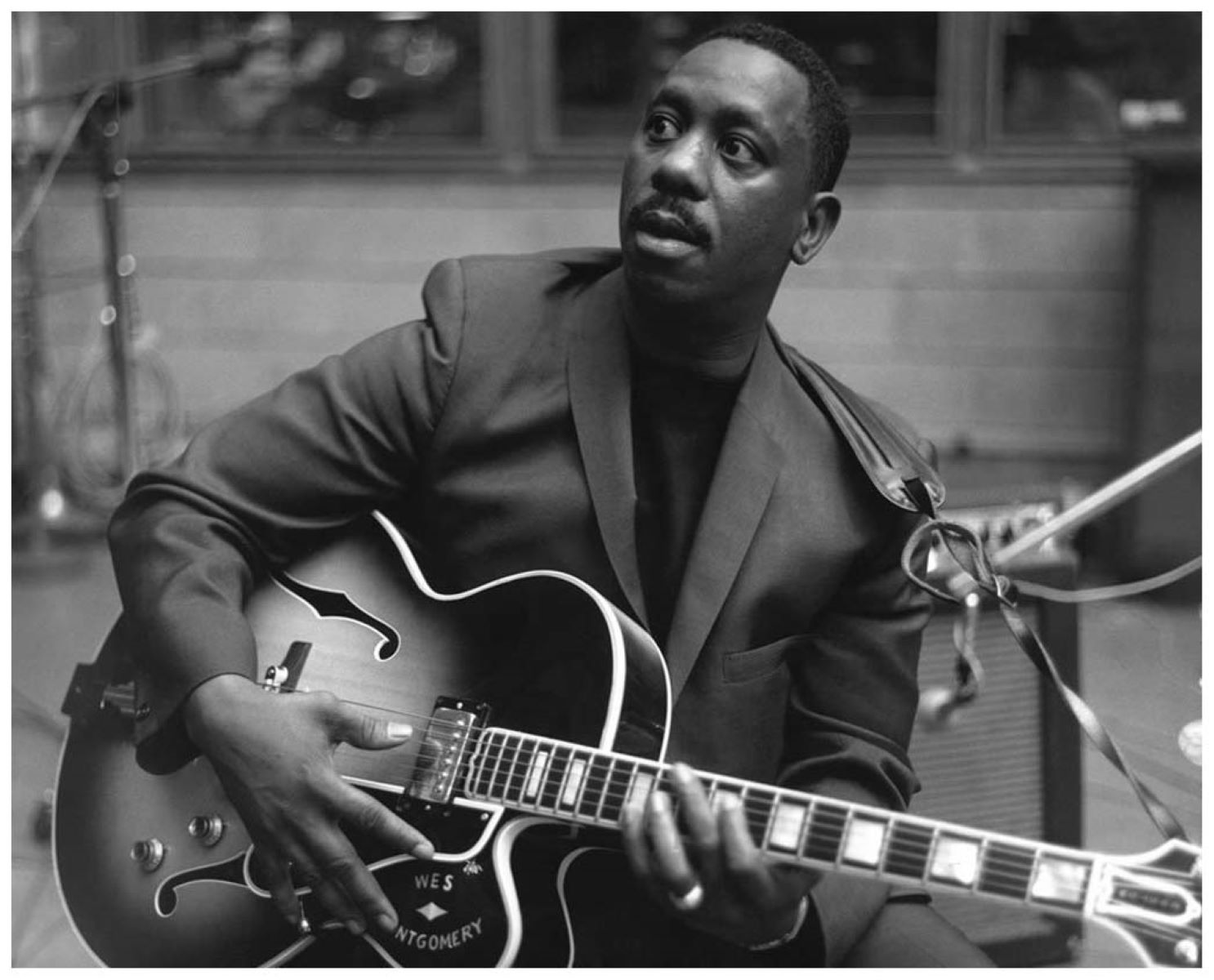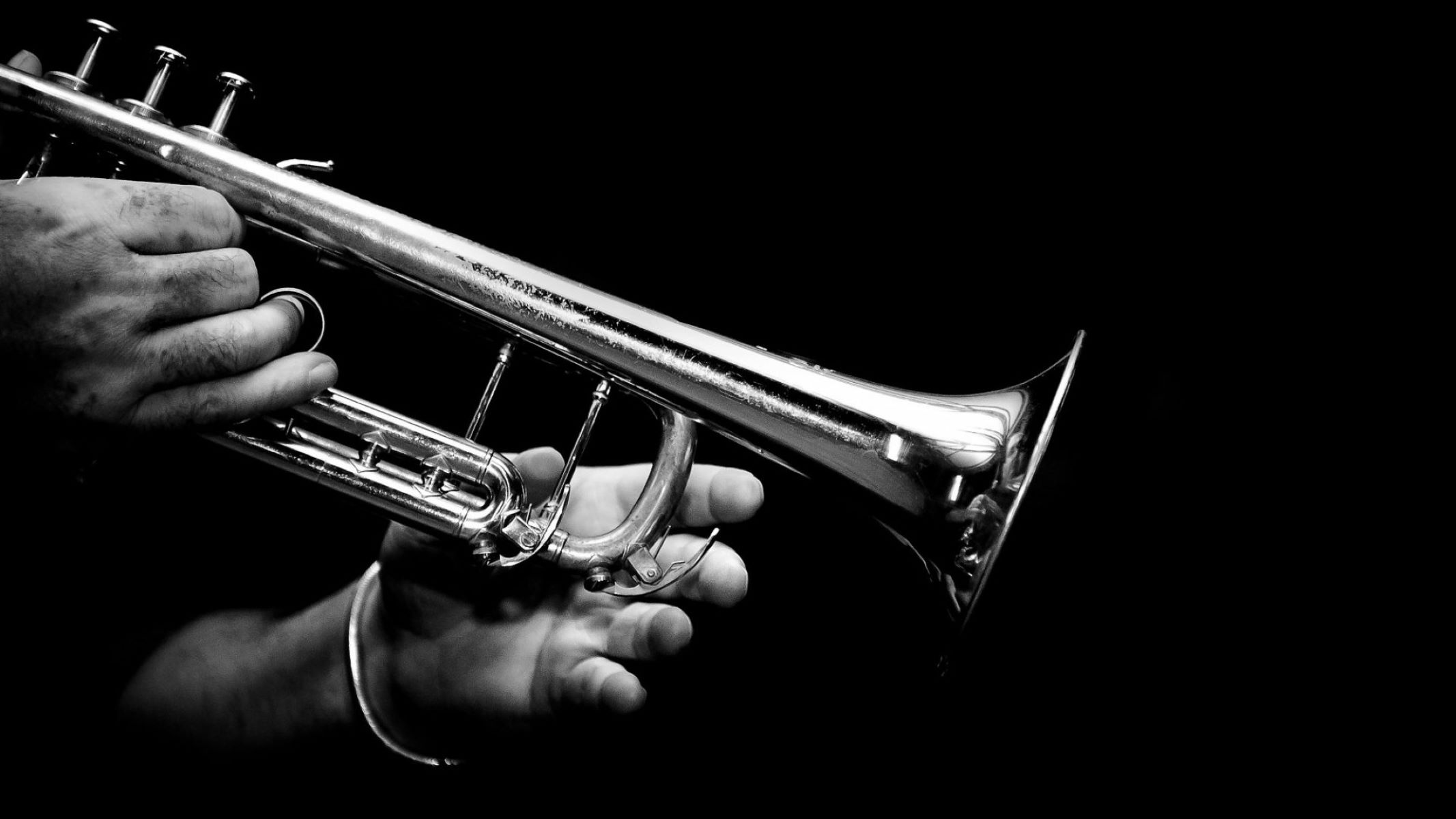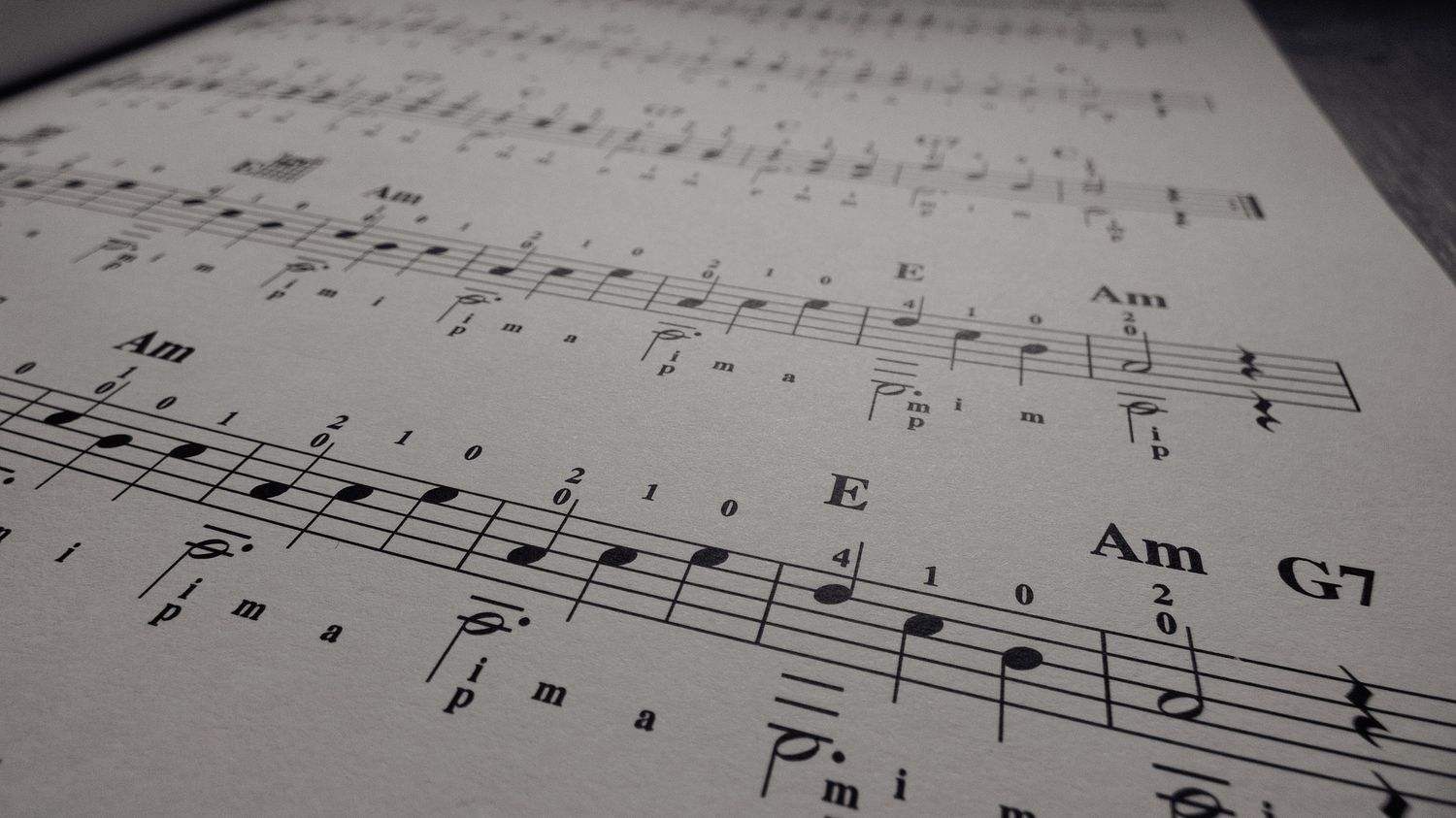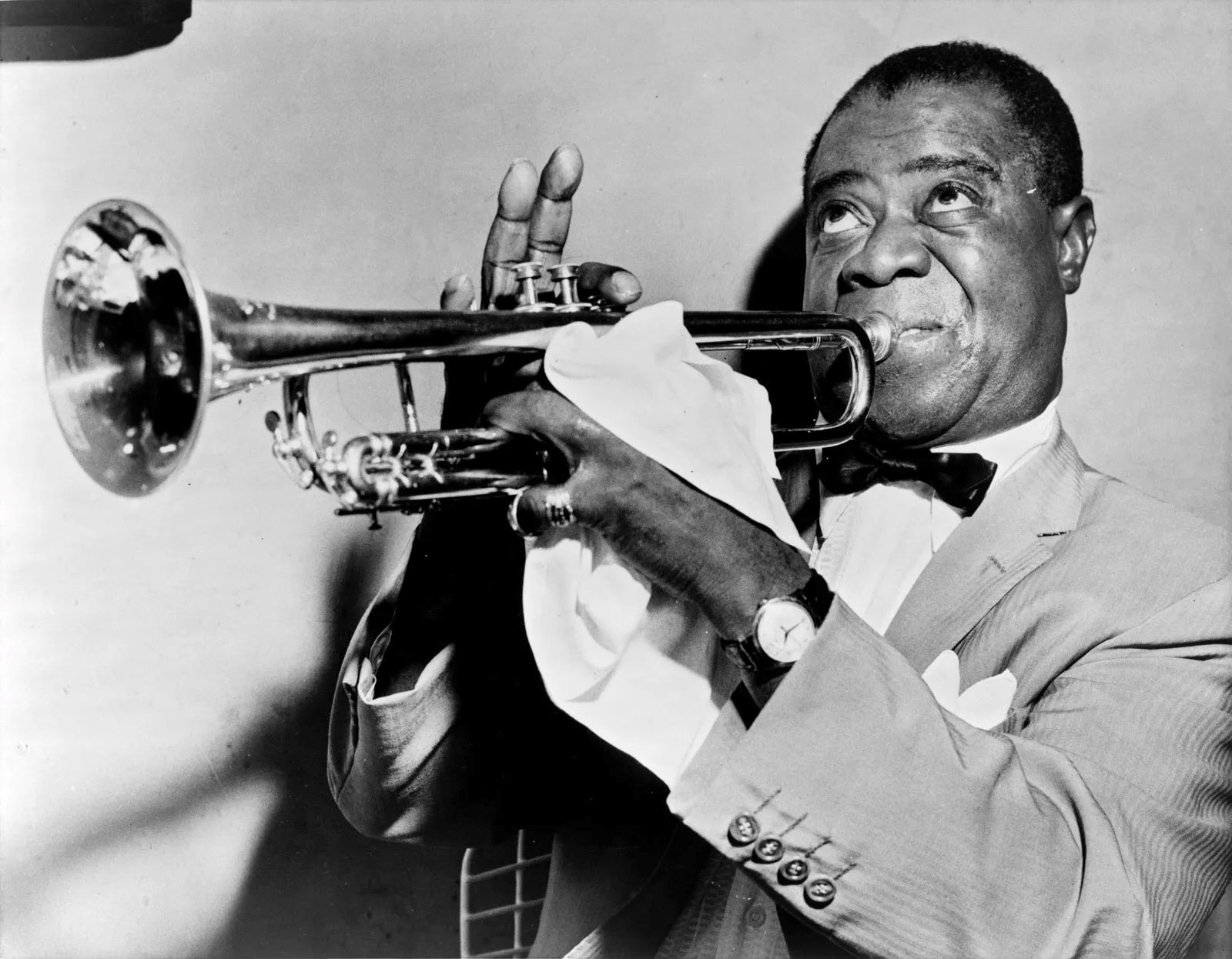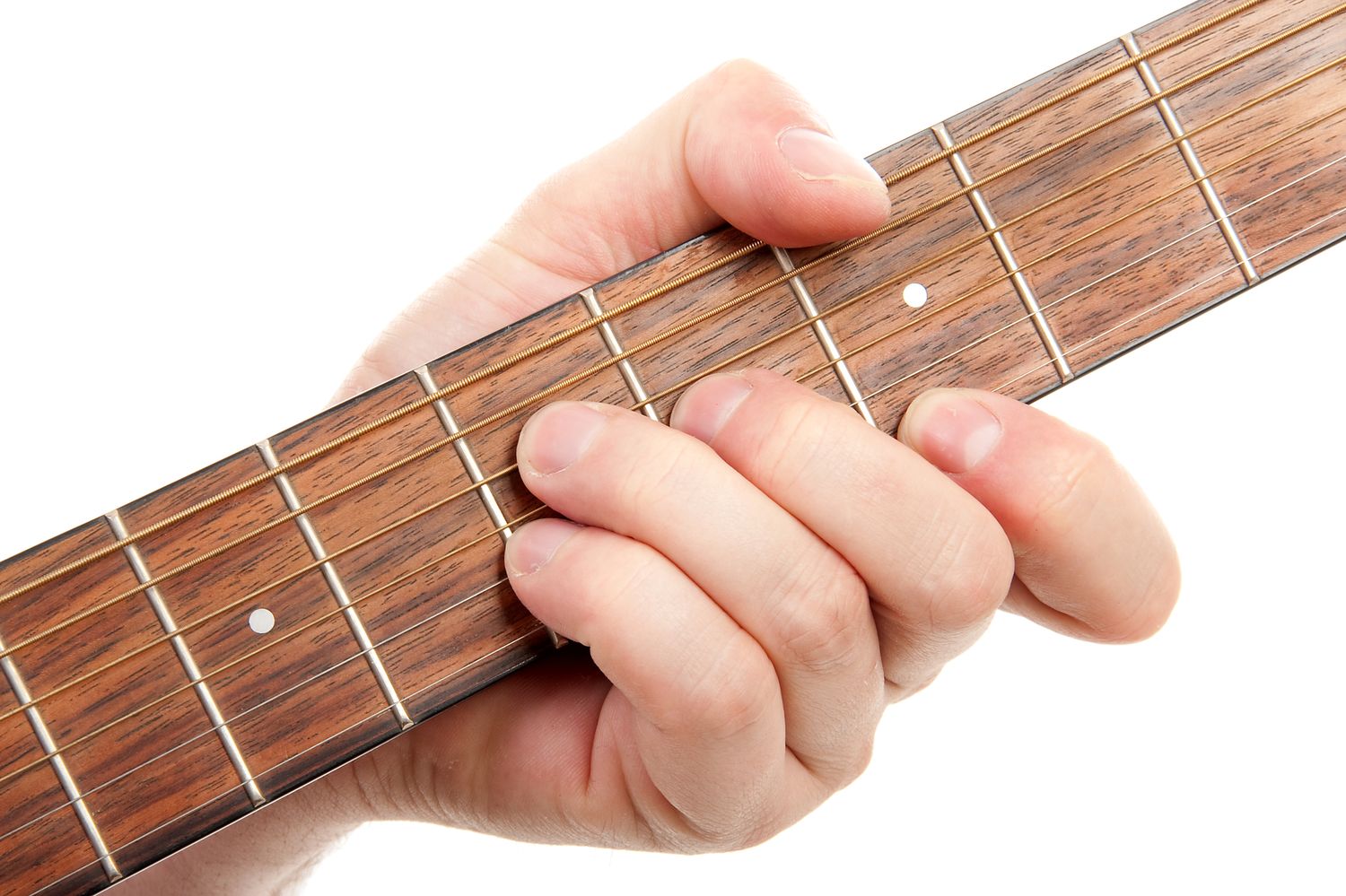Home>Genres>Jazz>What Is The Most Common Chord Progression In Jazz
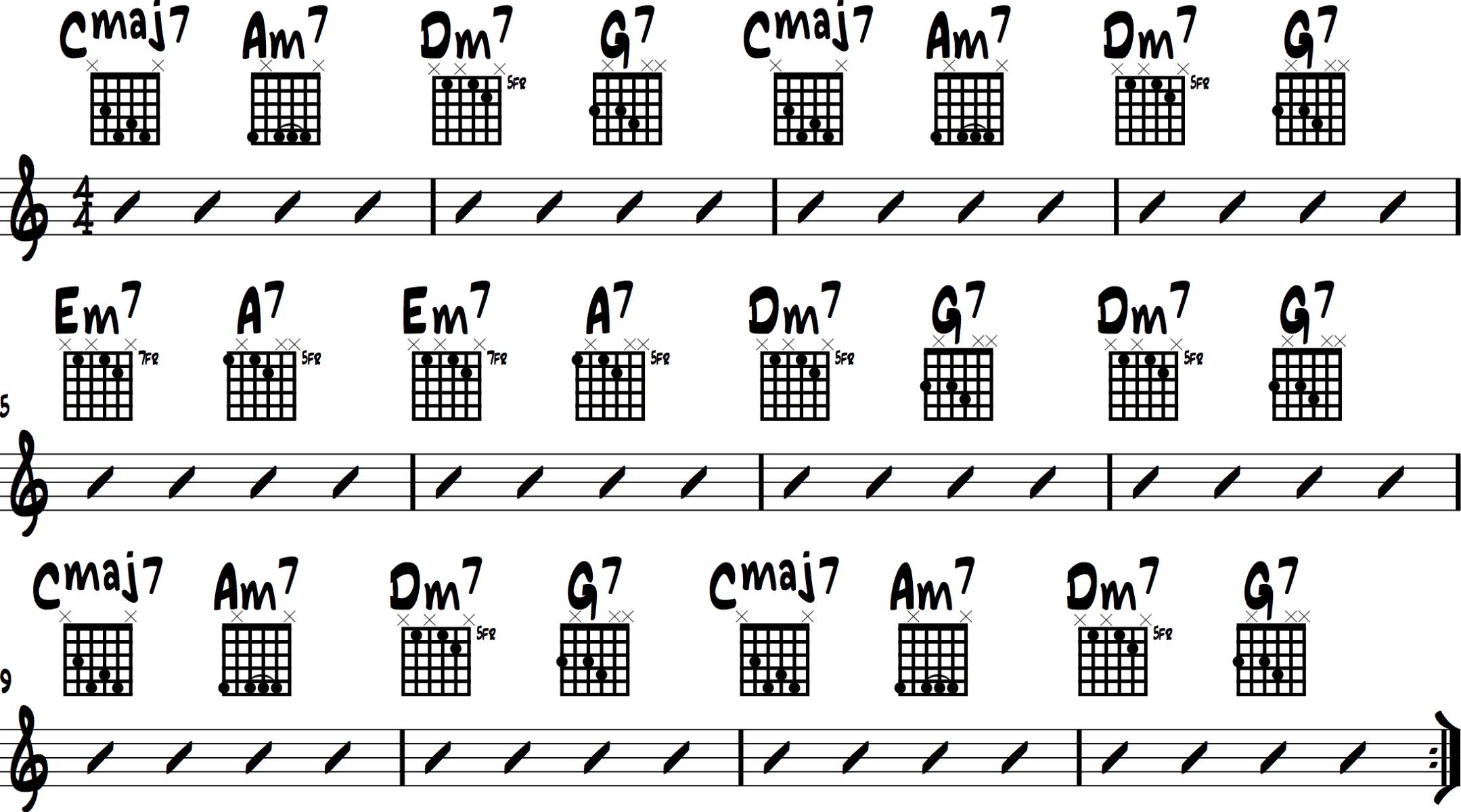

Jazz
What Is The Most Common Chord Progression In Jazz
Modified: February 24, 2024
Discover the most common chord progression in jazz and explore the captivating world of jazz music. Enhance your understanding of jazz with this comprehensive guide.
(Many of the links in this article redirect to a specific reviewed product. Your purchase of these products through affiliate links helps to generate commission for AudioLover.com, at no extra cost. Learn more)
Table of Contents
- Introduction
- What are chord progressions?
- Jazz chord progressions: an overview
- The most common chord progression in jazz: ii-V-I
- Understanding the ii-V-I progression
- Variations and substitutions of the ii-V-I progression
- Popular examples of ii-V-I progressions in jazz standards
- Other commonly used chord progressions in jazz
- Conclusion
Introduction
Jazz, often known as America’s classical music, has captivated listeners for over a century with its intricate melodies, improvisation, and rich harmonies. A fundamental aspect of jazz music is chord progressions, which provide the structural framework for improvisation and create the distinctive soundscape of the genre.
Chord progressions are sequences of chords that form the foundation of a musical piece. They give each song its unique character and serve as the backdrop for musicians to express their creativity through solos, melodic lines, and harmonies. In jazz, chord progressions are particularly significant, as they provide a platform for performers to engage in spontaneous improvisation.
In this article, we will explore the most common chord progression in jazz: the ii-V-I progression. We will delve into its structure, variations, and its prevalence in classic jazz standards. Furthermore, we will touch on other frequently used chord progressions in jazz, showcasing the diversity that exists within the genre.
Whether you are a jazz enthusiast, a musician, or simply curious about the genre, this article will serve as a comprehensive guide to understanding jazz chord progressions and their significance in creating the captivating sounds of jazz music.
What are chord progressions?
Chord progressions are a series of chords played in a specific order that form the backbone of a musical composition. They provide a harmonic structure and guide the flow of the music. In essence, they define the tonal framework of a song, establishing its key and creating a sense of musical tension and resolution.
In jazz, chord progressions are essential for improvisation. They provide a roadmap for musicians to navigate through a piece, offering a foundation upon which they can build their melodic ideas. Jazz chord progressions often involve complex and colorful harmonies, adding depth and sophistication to the music.
Typically, a chord progression consists of a series of chords played within a specific key or tonality. These chords are based on the notes of the corresponding scale and create a harmonic progression that gives the music its character and emotional impact. The progression can be as simple as a series of basic triads or as intricate as extended and altered chords.
Chord progressions are not limited to any particular musical genre, but they play a particularly significant role in jazz. The fluid and improvisational nature of jazz music allows for extensive exploration and reinterpretation of chord progressions, making them a defining feature of the genre.
Understanding chord progressions is essential for musicians, as they serve as a foundation for improvisation, harmonization, and composition. By knowing how to navigate and utilize different chord progressions, jazz musicians can create captivating and innovative performances that captivate audiences and push the boundaries of the genre.
Jazz chord progressions: an overview
In jazz music, chord progressions serve as the building blocks for improvisation, harmonization, and composition. They provide a framework for musicians to explore melodic ideas, create harmonies, and navigate through a piece. Jazz chord progressions are characterized by their complexity and the harmonic sophistication they bring to the music.
One distinguishing feature of jazz chord progressions is the use of extended and altered chords. These chords go beyond the basic triads typically found in other genres and include additional notes, such as the 7th, 9th, 11th, and 13th. These extensions add color, tension, and complexity to the harmonies, creating a rich and distinctive sound.
Jazz chord progressions are also known for their use of substitutions and reharmonizations. These techniques involve replacing or altering chords within a progression to add variety and interest. Substitutions can provide new harmonic possibilities and create unexpected twists and turns in the music, keeping the listener engaged.
Moreover, jazz chord progressions often incorporate cycle progressions, where a series of chords move by a specific interval, such as the circle of fifths or the cycle of fourths. These cycles create a sense of movement and resolution, adding a dynamic and flowing quality to the music.
Another characteristic of jazz chord progressions is the use of modal interchange. Modal interchange involves borrowing chords from different modes or scales and introducing them into a progression. This technique can create unique and exotic tonalities, enhancing the overall mood and texture of the music.
Whether it’s the use of extended chords, substitutions, cycle progressions, or modal interchange, jazz chord progressions are a testament to the genre’s rich and inventive nature. They provide endless possibilities for exploration and expression, allowing musicians to create captivating performances that captivate the listener’s ear.
The most common chord progression in jazz: ii-V-I
When it comes to jazz chord progressions, one stands out as the most ubiquitous and essential: the ii-V-I progression. This progression is often referred to as the “2-5-1” progression and is a fundamental building block of jazz harmony.
The ii-V-I progression is a sequence of chords that follows a specific pattern. It begins with a chord built on the second note of the scale (the ii chord), moves to a chord built on the fifth note (the V chord), and resolves to a chord built on the tonic or first note of the scale (the I chord).
Let’s take an example in the key of C major. In this case, the ii chord would be Dm (D minor), the V chord would be G7 (G dominant seventh), and the I chord would be C (C major). So the progression would be Dm – G7 – C.
The ii-V-I progression is loved by jazz musicians for several reasons. First, it creates a strong sense of harmonic tension and resolution. The ii chord sets up the dominant seventh V chord, which in turn resolves to the tonic I chord. This tension and release is a cornerstone of jazz harmony and provides a satisfying and resolved feeling to the listener’s ear.
Second, the ii-V-I progression is highly versatile and can be used in a variety of contexts. It can be found in countless jazz standards and compositions across different styles and eras. Its widespread use has made it a language that jazz musicians speak fluently, allowing for seamless communication and collaboration on the bandstand.
Third, the ii-V-I progression serves as a foundation for improvisation. Musicians can use the underlying chord progression as a guide to choose appropriate scales and arpeggios for their solos. This harmonic framework gives them a roadmap for navigating the changes and creating melodic lines that complement the chords.
Lastly, the ii-V-I progression is a springboard for creativity. Jazz musicians often add variations, substitutions, and embellishments to this basic progression, expanding its harmonic possibilities and adding their unique musical voices to the mix. This flexibility and adaptability make the ii-V-I progression an endless source of inspiration and exploration.
Overall, the ii-V-I progression is the cornerstone of jazz harmony. Its use spanning across different styles and eras is a testament to its timeless appeal and its role in shaping the iconic sounds of jazz music.
Understanding the ii-V-I progression
The ii-V-I progression is a staple in jazz music and understanding its structure is essential for any jazz musician. This progression follows a specific pattern and can be found in countless jazz standards. Let’s take a closer look at how the ii-V-I progression works and its harmonic implications.
The ii chord in the ii-V-I progression is a minor chord built on the second note of the scale. It serves as a setup for the V chord, creating tension before the resolution. For example, in the key of C major, the ii chord would be Dm (D minor).
The V chord in the ii-V-I progression is a dominant seventh chord built on the fifth note of the scale. It provides a strong pull towards the tonic I chord. In the key of C major, the V chord would be G7 (G dominant seventh).
Finally, the I chord in the ii-V-I progression is the tonic chord, built on the first note of the scale. It provides resolution and stability. In the key of C major, the I chord is C (C major).
When playing the ii-V-I progression, it’s important to understand the relationships between these chords and how they function harmonically. The ii chord acts as a ii minor to V major (or V dominant) relationship. This creates tension and leads to the V chord, which then resolves to the I chord, providing a resolution.
The ii-V-I progression can be played in different positions on the guitar or piano, allowing for various voicings and inversions. Experimenting with different voicings can add color and interest to the progression.
Additionally, jazz musicians often add extensions and alterations to the basic chords in the ii-V-I progression. This can include adding ninths, elevenths, and thirteenths, as well as altered tensions, such as flat nines or sharp elevens. These extensions and alterations enhance the harmonic complexity and richness of the progression.
Understanding the ii-V-I progression is crucial for jazz improvisation. As a soloist, knowing the chord tones and scales that correspond to each chord allows you to create melodic lines that not only align with the harmony but also create tension and release. By targeting chord tones on strong beats, you can effectively outline the harmonic progression in your improvisation.
Overall, the ii-V-I progression is a fundamental concept in jazz harmony. It provides a strong foundation for improvisation, a language for communication between musicians, and has shaped the sounds of countless jazz standards. Mastering this progression will unlock a world of possibilities for any jazz musician.
Variations and substitutions of the ii-V-I progression
While the ii-V-I progression is a cornerstone of jazz harmony, jazz musicians love to experiment and add their unique flavors to the progression. This creativity has led to numerous variations and substitutions of the traditional ii-V-I, offering new harmonic possibilities and adding depth to jazz compositions. Let’s explore some of the common variations and substitutions of the ii-V-I progression.
1. Modal interchange: Modal interchange involves borrowing chords from related modes and incorporating them into the progression. For example, replacing the ii chord with a II (major) chord or the V chord with a V7sus chord. This technique adds new tonal colors and textures to the progression.
2. Secondary dominants: Secondary dominants are chords that temporarily establish a new tonal center. By introducing dominant chords before a target chord, you create tension and enhance the resolution. For example, adding a secondary dominant before the V chord in the ii-V-I progression.
3. Tritone substitution: Tritone substitution is a common substitution in jazz. It involves replacing the V chord with a dominant chord whose root is a tritone away. This creates a chromatic movement and adds harmonic interest. For example, replacing the G7 in a ii-V-I in C major with Db7.
4. Coltrane changes: Made famous by saxophonist John Coltrane, the Coltrane changes are a series of descending ii-V progressions. This extended progression creates a sense of tension and dramatic movement, providing a unique harmonic backdrop for improvisation.
5. Turnaround progressions: Turnaround progressions are variations of the ii-V-I that occur at the end of a phrase or section to lead back to the beginning. They often involve chromatic movements and substitutions to create a smooth and satisfying resolution back to the beginning of the progression.
These are just a few examples of the many variations and substitutions that jazz musicians use to enhance and personalize the ii-V-I progression. It’s important to note that while these substitutions can add complexity and interest, understanding the basic ii-V-I framework is still crucial as it provides a solid foundation for these variations.
By exploring and incorporating these variations and substitutions, jazz musicians can add their unique voice to compositions, create fresh and exciting harmonic progressions, and continually push the boundaries of jazz music.
Popular examples of ii-V-I progressions in jazz standards
The ii-V-I progression is so deeply ingrained in jazz music that it can be found in countless jazz standards. These timeless compositions showcase the versatility and beauty of the ii-V-I progression in various keys and musical contexts. Let’s explore a few popular examples of jazz standards that prominently feature the ii-V-I progression.
1. “Autumn Leaves”: This classic jazz standard, composed by Joseph Kosma, is a prime example of the ii-V-I progression. The progression occurs in multiple keys throughout the song and provides a solid foundation for improvisation over its melodic structure. Players can explore different harmonic possibilities within the ii-V-I framework, adding their unique interpretations to this beloved tune.
2. “All the Things You Are”: This Jerome Kern composition is known for its intricate harmonic progression, including several ii-V-I sequences. Musicians often enjoy improvising over the challenging chord changes of this tune, showcasing their ability to navigate through different key centers and smoothly resolve to the tonic.
3. “So What”: Miles Davis’ iconic modal jazz piece features a recurring ii-V-I progression in the key of D Dorian. The simplicity and repetition of this progression contribute to the piece’s hypnotic quality, allowing musicians to experiment with melodic ideas and explore the different tonalities within the D Dorian mode.
4. Take the A Train”: Composed by Billy Strayhorn and famously performed by the Duke Ellington Orchestra, this jazz standard begins with a ii-V-I progression in the key of C. The instantly recognizable melody and chord progression provide a great platform for improvisation and have made this tune a favorite among jazz musicians for decades.
5. “Fly Me to the Moon”: Originally written by Bart Howard, this popular jazz standard’s chorus features a ii-V-I progression in the key of C. The catchy melody and nostalgic lyrics have made it a favorite for vocalists and instrumentalists alike, providing ample opportunities for improvisation and showcasing the beauty of the ii-V-I progression.
These are just a few examples of the many jazz standards that prominently feature the ii-V-I progression. They demonstrate the timelessness and musicality of this harmonic sequence, allowing musicians to showcase their improvisational skills and creativity within its framework.
By studying and mastering these jazz standards and their ii-V-I progressions, musicians can gain a deeper understanding of the versatility and significance of this harmonic sequence in the world of jazz music.
Other commonly used chord progressions in jazz
While the ii-V-I progression may be the most prevalent in jazz music, there are several other chord progressions that jazz musicians frequently encounter and explore. These progressions bring variety and complexity to jazz compositions, adding depth and interest to the harmonic landscape. Let’s take a look at some of the other commonly used chord progressions in jazz.
1. The Blues Progression: The blues is a fundamental component of jazz music, and its chord progression holds great significance. The 12-bar blues progression typically consists of three chords, the I, IV, and V chords. This progression provides a canvas for blues-inspired improvisation and serves as a launching pad for expressive solos and melodies.
2. Rhythm Changes: Derived from George Gershwin’s composition “I Got Rhythm,” the rhythm changes progression is a popular choice in the jazz repertoire. It follows an AABA form, featuring a series of ii-V-I progressions in different keys. Many famous jazz compositions, such as “Anthropology” by Charlie Parker and “Oleo” by Sonny Rollins, utilize the rhythm changes progression.
3. Modal Progressions: Modal jazz explores harmony based on modes rather than traditional functional chord progressions. Modal progressions often involve extended chords and use fewer changes compared to traditional progressions. Songs like “Maiden Voyage” by Herbie Hancock or “So What” by Miles Davis are prime examples of modal progressions, allowing for open improvisation and exploration of different tonalities.
4. Coltrane Changes: Named after legendary saxophonist John Coltrane, the Coltrane changes are a series of chord progressions that provide a sense of harmonic intensity and continuous motion. Coltrane often used a sequence of key centers connected by descending ii-V progressions, creating a unique and challenging harmonic landscape for improvisation.
5. Circle Progressions: Circle progressions consist of a series of chords moving in fourths or fifths. They create a sense of perpetual motion and can be found in various jazz compositions. Circle progressions provide an opportunity for musicians to explore melodic possibilities as they navigate through a sequence of connected chords.
These are just a few examples of the many chord progressions that are commonly used in jazz. Exploring these progressions and integrating them into one’s repertoire allows musicians to broaden their harmonic palette and delve deeper into the intricacies of jazz music.
By learning, analyzing, and applying these chord progressions, jazz musicians can develop a deeper understanding of jazz harmony and expand their improvisational abilities, bringing richness and complexity to their performances.
Conclusion
Jazz chord progressions form the backbone of the genre, providing a harmonic roadmap for musicians to explore, improvise, and create captivating melodies. At the heart of jazz harmony lies the ubiquitous ii-V-I progression, which serves as the cornerstone of countless jazz standards and compositions. Understanding the structure and variations of the ii-V-I progression is essential for any jazz musician, as it provides a solid foundation for improvisation and communication on the bandstand.
However, jazz is a genre known for its exploration and innovation, and there are numerous other chord progressions that jazz musicians frequently encounter and incorporate into their playing. From the blues progression to modal progressions, circle progressions, and the challenging Coltrane changes, each progression brings its unique colors and challenges, offering endless possibilities for artistic expression.
Whether one is a jazz enthusiast, a budding musician, or a seasoned player, delving into the world of jazz chord progressions opens up a treasure trove of musical exploration. By studying and mastering these progressions, musicians can unlock new opportunities for improvisation, harmonization, and composition.
Above all, jazz is a living, breathing art form that thrives on the creativity and adaptability of its practitioners. While understanding the theory and mechanics of jazz chord progressions is crucial, it is equally important to embrace the spirit of improvisation and bring one’s unique voice and personality to the music.
So, whether you are immersed in the enchanting melodies of a ii-V-I progression, delving into the raw emotion of a blues progression, or exploring the adventurous realm of modal progressions, let the harmonies guide you and the music inspire you to create magic in the world of jazz.




